Rest at the Rock. Pause at the Flowers.
[rev_slider Pyrenees]
In times of trial and transition, some people hunker down; they find comfort in familiar routines and surroundings. Others, like Peat O’Neil ’15, do the opposite; they break away.
On the brink of turning 50, O’Neil was busy writing for the Washington Post by day and teaching travel writing at night; but she wanted a new project or adventure to mark the occasion; preferably something physically demanding. Browsing a Bethesda bookstore in March 2000, she found what she was looking for in a guidebook about hiking the Pyrenees Mountains.
As she paged through the guide, gathering details about the region, O’Neil formed an idea: a pilgrimage eastward across France, from the Atlantic Ocean to the Mediterranean Sea, a distance of several hundred miles by footpath.
The Pyrenees range in southwest Europe forms a natural border between France and Spain. The mountain pass at the western Pyrenees crossing stands at 3,156 feet above sea level, while higher elevations in the central section reach above 11,000 feet. For centuries, the region has been the route for religious pilgrims—“the tourists of medieval times,” as O’Neil calls them. Today, in addition to weekend and seasonal visitors, the area draws crowds each June for the Tour de France. Accommodations at local farms, inns, and gites, or simple shelters with nearby caretakers, are spaced about a day’s walk apart, eliminating the need for camping gear.
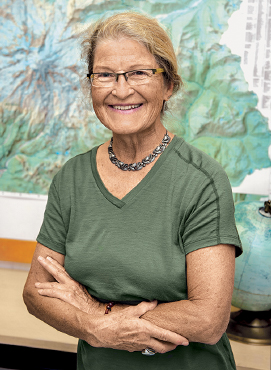
Peat O’Neil, writing instructor, author, and expert traveler, is also a lifelong learner. Since the 1990s, she has returned to MC to pursue her various interests: Russian language and history, exercise science, and computer science.
O’Neil arrived in Europe in September carrying a 25-pound hiking pack; it was late in the season, but she’d been unable to finish work and freelance projects any sooner. Her route would be the GR-10 footpath, a lower-elevation/more direct route than others in the region. It meanders through forests, past farms and sheep pastures in hidden Basque valleys, and along cobblestone lanes and paths.
“I took a deep breath of the Atlantic wind, faced east, and took my first steps on the trail, following the credit card-sized red and white path blazes painted on walls, lamp posts, and guard railings.”
O’Neil kept a journal and sketched the landscape in watercolor during her expedition. She published the narrative, Pyrenees Pilgrimage, Walking Across France in 2010. It details regional history, architecture, and the people she encountered, including “farm women who saluted my independence… English vicars on vacation… and weekend warrior mountain bikers.”
She developed a daily routine of walking from 10 a.m. until early afternoon. She averaged 15 to 25 kilometers (9 to 16 miles) a day. Gradually, mile after mile, her back hardened and her feet hurt less. While it was physically demanding, the solo hike proved emotionally calming.
“Hikers need rewards to carry on,” she wrote. “Spotting wildflowers up ahead or an oddly shaped rock, I would use it as an incentive to plod upward. Rest at the rock. Pause at the flowers.”
By October, she observed the short-ening daylight hours. Only once did it seem she might not find shelter before nightfall—the day she slipped and injured herself.
Instead of going the long way around, O’Neil decided she could make it across a stream. Partially across, her foot slipped on the rocks and she fell into the rushing water. Her arms reached out to break the fall, and she snapped her wrist. Shivering and in pain, she fought back panic, and hiked out to find help. She underwent surgery, alone, in the local hospital; the surgeon, luckily, was an expert in Tour de France wrist injuries.
O’Neil resumed the trip the following spring, fully recovered. In total, she completed 685 kilometers (425 miles) in actual distance.
“So many people—especially women—tell me they always wanted to travel but never had anyone to go with.” To the woman who paid for and organized her first trip to Europe at 16, that notion is misguided: “If you only get 960 months on Earth, what are you going to do with them?” she says.
It’s true: the average lifespan for a woman in the United States, according to the US Census Bureau (2011), is 80.8 years; for men, it’s 76. Past the halfway mark, O’Neil says physical fitness preparation has become more important than the library/online research she does to prepare for traveling.
“On my last trip in May (2015)—three weeks of walking in cities, driving in mountains, and generally moving around through England, France, and Andorra—I overloaded my wheeled bag and was unprepared for the hard pavements, stairs in the London Tube, and Paris Metro. I learned I can no longer depend on shaping up during the first few days of a trip. Better to start a month in advance. It is also important to test-drive your gear—luggage, backpacks, walking shoes, or boots.”
O’Neil plans to finish writing a book about living in Mexico while she was a foreign service officer for the US Department of State. She also wants to start writing the others (she has about 10 more in mind). Currently, she is planning the details to lead a walking and sketching tour of a segment of the Pyrenees Pilgrimage route. The May 2017 trip, which follows the southwest French route of the Chemin de St. Jacques, will be geared toward moderate walkers and artists of any skill level.
—Diane Bosser
Follow Peat O’Neil online at adventuretravelwriter.org
A Storied Career
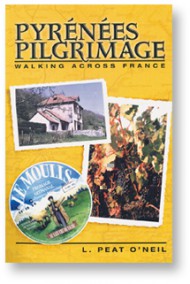 L. Peat O’Neil ’15, a native Washingtonian, worked on the news staff of the Washington Post for nearly two decades. She has published three books: Pyrenees Pilgrimage, Walking Across France (2010); Travel Writing, A Guide to Research, Writing and Selling (Writer’s Digest Books, 1995, 2005); and a chapter in Siberia: In Search of Adventure: A Wild Travel Anthology (CCC Publishing, 1999), about her adventures in Kamchatka, Russia. She has contributed feature articles to numerous journals, websites, newspapers, and magazines. She teaches writing at The Writer’s Center in Bethesda and for UCLA online. Her travel sketchbooks were featured in an exhibit, Intimate Journeys—Artists Sketchbooks (1994), at the National Museum of Women in the Arts. At MC, she earned an AAS in applied sciences (applied geography) and a certificate in geography education.
L. Peat O’Neil ’15, a native Washingtonian, worked on the news staff of the Washington Post for nearly two decades. She has published three books: Pyrenees Pilgrimage, Walking Across France (2010); Travel Writing, A Guide to Research, Writing and Selling (Writer’s Digest Books, 1995, 2005); and a chapter in Siberia: In Search of Adventure: A Wild Travel Anthology (CCC Publishing, 1999), about her adventures in Kamchatka, Russia. She has contributed feature articles to numerous journals, websites, newspapers, and magazines. She teaches writing at The Writer’s Center in Bethesda and for UCLA online. Her travel sketchbooks were featured in an exhibit, Intimate Journeys—Artists Sketchbooks (1994), at the National Museum of Women in the Arts. At MC, she earned an AAS in applied sciences (applied geography) and a certificate in geography education.

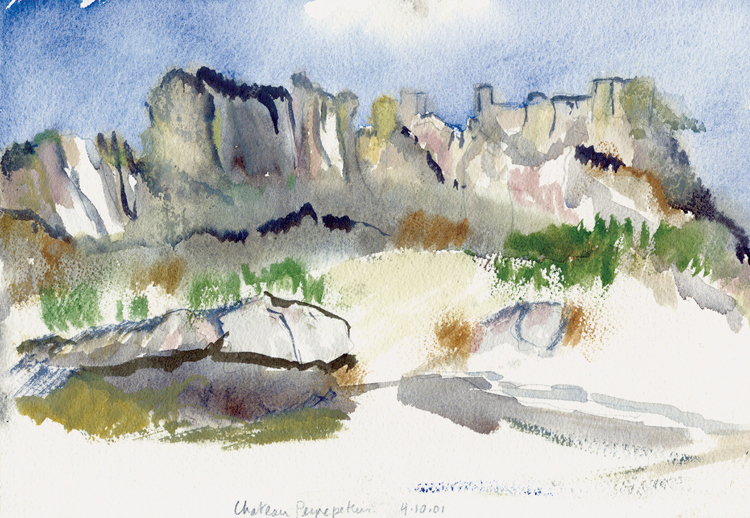
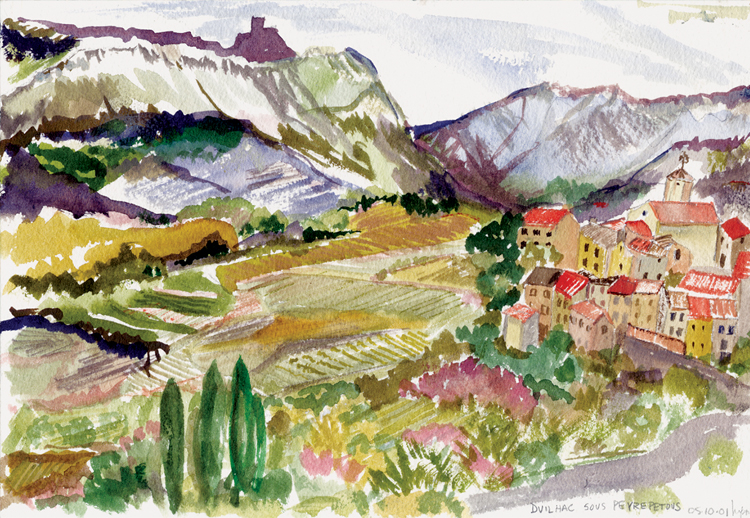


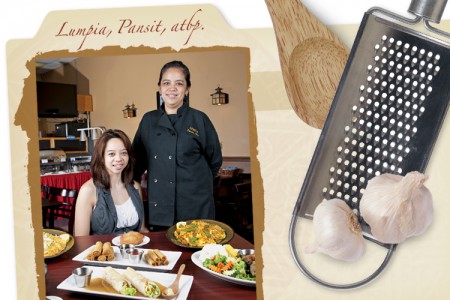


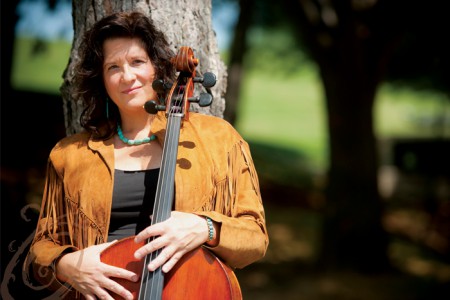

Follow Us